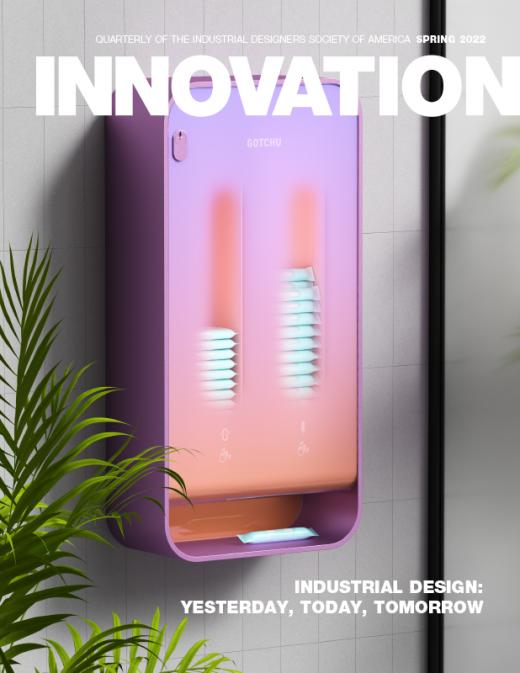Mobile Ethnography Research: A New Methodology for New Times.
The COVID-19 pandemic has changed everything. Its impact on global wellness and the economy has forced organizations in every industry—including our own—to rethink how we do things. It has acted as an emergency brake and an accelerator, ramping up the adoption of some trends and triggering the abandonment of others. It has severely disrupted how design-based research is being executed in our industry—limiting access to people’s homes and workplaces, shuttering research labs, and eroding the trust required to engage people through intimate participatory methods—leaving us to grapple with the challenge of creating intimacy at arm’s length. As design researchers, the time we spend in the field with our research participants is precious; it is vital for us to be in the same shared spaces as them in context and in the moment. Going where life is lived, we explore their worlds in their homes and places of work, gathering the rich data we need to paint a nuanced picture of a population or cohort in these spaces.
The Great Acceleration
COVID-19 obliterated this approach, forcing a transition within design research to be undertaken entirely remotely with both expected challenges and unexpected benefits. The ground has shifted and with it a significant opportunity for design-based research. We see an increased demand for design research, with many clients requesting more mobile and digital approaches. The great acceleration in digital adoption is undoubtedly one of the most apparent trends to come from the pandemic. Necessity has new spurred new digital users and use cases, especially in e-commerce, and it’s only natural that these new habits are sticking around. People are more open than ever to remote digital interactions. As design researchers, we can now, through digital platforms, observe how respondents really behave in context and in the moment and at a speed and scale that was never previously achievable with traditional ethnography, in-depth interviews, and focus groups.
The pandemic has accelerated the adoption of mobile ethnography research (sometimes referred to as “digital ethnography”). Before everyone was walking around facedown in their smartphone, ethnography required researchers to spend hours with their subjects on a one-to-one basis observing behaviors, conducting interviews, and collecting context in the field. It was valuable work but also time consuming, costly, limited in scope, and, as a result, cumbersome to scale. Now mobile ethnography research provides a portal to tens, twenties, even hundreds of people’s behaviors simultaneously. Smartphone users diarize their behaviors and feelings using videos, photos, or text, giving us a window into their world and enabling researchers to see what’s happening in each individual’s life. We’re now able to derive the kinds of powerful insights that you might only expect to see with an exhaustive broad-based longitudinal study, but instead in a much more rapid and nimble format that yields a super-rich qualitative data set. It’s a powerful tool that is used to unlock the views of the many with the work of just a few, but its value also lies in its ability to see beyond a linear narrative, putting the pieces of your respondents’ lives in new and exciting ways that help you chart new pathways to growth.
New Methods Demand New Approaches
As the early adoption of tech often goes, while some companies have taken the plunge into the world of mobile ethnography research, many are simply applying new technology to old thinking. They are replicating the same studies they were doing in the field without giving much thought about how to best use the wide-open digital world now available to them.
It’s easy to get excited about the possibilities of mobile ethnography research. The ability to peek into previously tough to capture moments and gather media-rich responses to answer your most pressing research questions is enticing. But there’s a lot of confusion about how to actually do it well. Mobile ethnography is not a survey, nor is it pure ethnographic research. Mobile research is its own distinct methodology, requiring a much different and nuanced approach.
When you’re physically there with a participant in traditional ethnography, you can let their actions and environment guide your line of questioning, building empathy and capturing deep learning. When conducting a survey, you can rely on having a focused 15–20 minutes of participant attention where you can pose a battery of detailed questions, drilling into the breadth and scale of a potential opportunity.
But because mobile ethnography research is neither in-person nor focused on a single focused point in time, it requires design researchers to think differently. When structuring for mobile, you must anticipate respondent behavior and carefully structure the tasks you want to capture and the questions you want to be answered ahead of time. And even then, it’s not always easy to gather both quality and quantity of responses you need to form a robust qualitative data stream.
5 Tips for Structuring a Mobile Ethnography Engagement
To make the best use of mobile ethnography, you have to create not just studies but mobile engagements that prompt respondents to share openly, honestly, and frequently. The key is to learn how participants’ lives naturally unfold and then fit your study within their world. Here’s how.
1. Consider the delivery.
You’re reaching people on their most personal device; stay colloquial—but not irreverent. The power of a mobile device is that people use it for a variety of really personal reasons—for connection, for entertainment, for their livelihoods—and often, it’s never out of arms reach. If you set the tone of voice of your study to match the personal way your audience engages with their device, you’ll intrude less and learn more. Your responses will be more intimate, profound, and compelling because you’ll be proving right from the start that you get them. Keep it fun and engaging and stay away from business or tech speak. Asking a question like “Tell me about the features and benefits of this product” may drive directly at your study objectives, but it’s awfully boring to answer. Plus, features and benefits might have a different meaning for the average participant than for you as a researcher. Instead, ask your respondents to show you what they can do with the product, then observe and record the value they derive from the interaction.
2. Build connections with your respondents.
Don’t be afraid to get personal; help them feel like a human, not a research subject. Know your audience, and you can make that colloquialism work further for you by incorporating slang and conversational language that help you better connect with participants (for example, questions for millennials should be phrased differently than those for baby boomers). You want to sound like someone they can relate to, someone they’d want to be friends with and tell things to.
Start by responding and prompting individuals by name to know they aren’t just sending responses off into the ether. Then frame your questions in a way that reflects an interest in the person and genuine curiosity, just like you’d use when talking to a friend you care about. It should help you get warmer, more unique, and genuine responses.
3. Capture responses with minimal intrusion.
Consider if what you’re asking is easy to capture and document and if they’re comfortable capturing it in the location you’re asking about. Remember that not everyone is a wannabe YouTube star interested in filming every moment of their day (nor do you want to have to review copious hours of footage). Ask yourself: Will they feel comfortable capturing specific behaviors, especially if it’s being done in public? Is the moment short enough in duration to be documented in a few minutes, or do you need to be more specific? From a practitioner’s perspective, it’s all about giving people the ability to quickly capture what’s happening and respond to questions without taking them out of the moment.
4. Create opportunities to discover connections among questions.
Think about your lines of questioning synergistically—you may not need to capture the full answer all at once. A lot of the language people typically use in market or design research does not work for mobile ethnography. Research objectives reframed as inquiries, or the type of direct questioning often written for quantitative surveys (“How did you use the thing you were using?” “How do you feel when you do x?”) don’t leave room for exponential insights; they don’t get you to the tangents.
With mobile ethnography research, it can serve you better to develop lines of indirect questioning and capture examples of behavior in the moment. These indirect questions, such as “Draw a character that represents x” or “Act out a breakup conversation with y,” can ultimately reveal more about what is important to the subject and allow for nuances in the answers. And because you’re capturing data over time, you can piece together insights from anywhere across your data stream.
5. Context, context, context.
Save reflective or value judgment questions until the end so as to not bias your sample. Indirect questions also help avoid any type of bias. If you’re doing a study on healthy eating habits, for example, you don’t want to start off by asking, “What’s your philosophy on healthy eating?” For the next three days, you’re going to see your subject leaning into that philosophy because now you’ve just anchored them on an ideal. Instead, start with more broad-based lifestyle questions, or you might ask them to show you what’s in their fridge or pantry. Then you can start to gather impartial evidence on consumption habits. To better understand the relevant triggers and rewards that establish behavior patterns, dig into what’s going on before, after, and way after the information you are looking to capture.
One Last Tip
When thinking about mobile ethnography research, consider your study from two perspectives: the first is your respondent, and the second is you, the person who is analyzing the data. You want to keep it fun and engaging, for both your sakes! You also want your efforts and energy to pay off, so keep your questions simple and straightforward; don’t leave room for confusion, or you won’t get the data you need.
An excellent way to make sure your questions are easy to understand? Text them to a friend. See what you get back.
Their responses just might surprise you!
_______________________________________________________________________________________________________________

This article was originally published in INNOVATION Spring 2022, the Industrial Design Society of America’s (IDSA) quarterly and one of the best places to learn about the practice of industrial design. Every issue of INNOVATION reaches IDSA’s membership, universities, associations, design consultancies and subscribers around the world.
INNOVATION is a benefit of membership. Join today.












